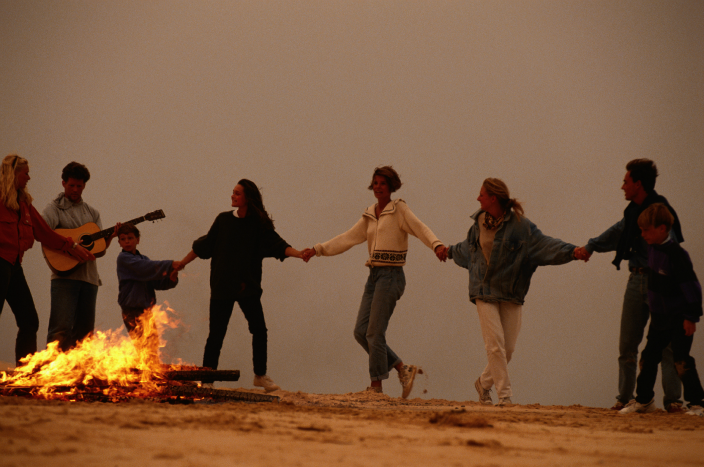
Lag BaOmer is a shorthand way of saying the 33rd day of the . (The numerical value of the Hebrew letter lamed is 30, and the value of gimel is three; lamed and gimel together are pronounced “lahg.”) In addition to tracking the agricultural cycle, the Omer marks the seven-week period from Passover, which commemorates the Israelites’ Exodus from Egypt, to Shavuot, which commemorates the giving of the at Mount Sinai.
The journey from Egypt to Sinai was not only biblical, but spiritual as well. As the Israelites hiked through the desert, they also had to find their way through the wilderness of their souls, preparing themselves not only to be given the Torah, but to accept the Torah. Some people take the time during the Omer as one of self-reflection, focusing on study and self-improvement.
Lag BaOmer is not mentioned in the Torah and only hinted at in the Talmud, and there is no formal observance associated with the holiday. But a series of festive and meaningful Lag BaOmer rituals have evolved over time.
Historically, the period of the Omer is a time of semi-mourning, when weddings and other festivities are avoided, in memory of a plague that killed thousands of students of Rabbi Akiva, a Talmudic scholar (c. 50-135 C.E.). Lag BaOmer was the day on which the plague ceased, and thus became a day on which the mourning rituals are abandoned, replaced with great joy.
In Israel, parties and picnics abound and many attend evening bonfires. The Jewish historian Josephus recorded Lag BaOmer as the date in 66 C.E. when the revolt against Rome began. There was a great victory on that day. It is therefore possible that the bonfires of today commemorate the bonfires kindled almost 2,000 years ago in celebration of successful Jewish resistance to oppression.
Additionally, many Jews mark Lag BaOmer by commemorating the death of Shimon bar Yochai, a second-century sage from ancient Judea. According to Jewish legend, bar Yochai performed many miracles and received secret mystical knowledge. Some consider him the author of the Zohar, a foundational Jewish mystical text. Bar Yochai died on the 33rd day of the Omer, and his is known as a Yom Hilula (a day of festivity to commemorate the death of a righteous mystical leader). The Yom Hilula of bar Yochai is customarily celebrated with bonfires, torch lighting, song, and feasting.
